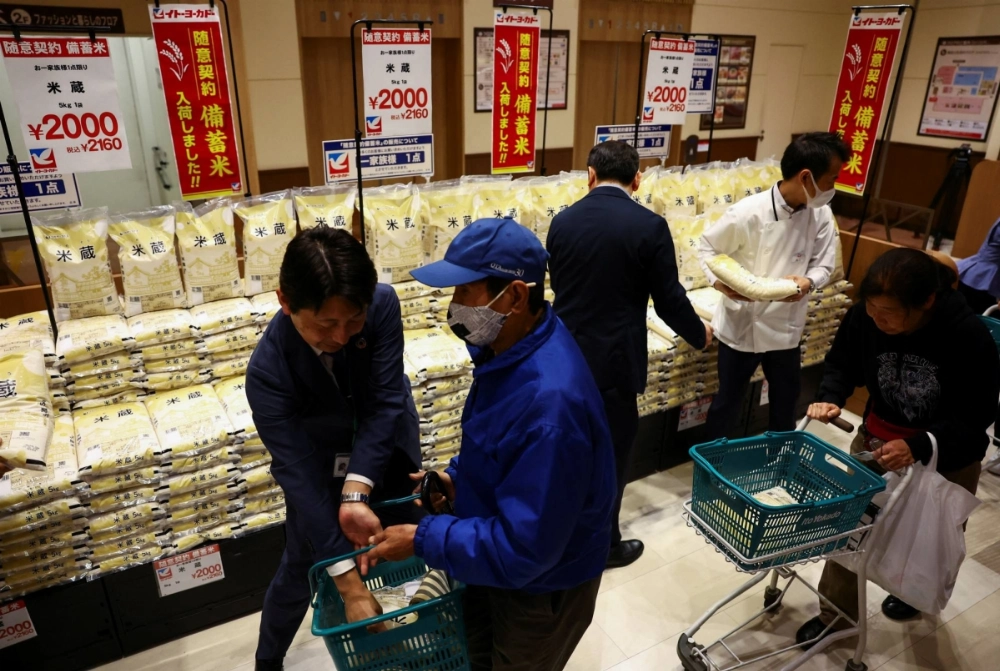The diversification of rice sales channels may have contributed to the surge in prices of the staple since last summer, according to a survey released by the agriculture ministry Wednesday.
The amount of 2024 rice shipped from producers to major buyers dealing with farmers fell by 340,000 metric tons from the previous year, while shipments through other channels, such as direct sales, increased by 490,000 tons, according to estimates as of the end of June.
The ministry believes that the increase in rice distributed through new channels with higher transaction prices is one of the factors behind the rice price surge.
Demand for 2024 rice intended primarily for direct human consumption is estimated to reach 7.11 million tons, up by 370,000 tons from an estimate as of May, the ministry also said.
The results of the survey were presented at a meeting to discuss agricultural policies.
"We will reflect what was discussed in the results of the assessment" of soaring rice prices and other issues, agriculture minister Shinjiro Koizumi said.
The main distribution channels for rice have traditionally been through major buyers, such as the National Federation of Agricultural Cooperative Associations, or Zen-Noh.
According to the survey, producers' direct rice sales and transactions with other traders totaled 2.95 million tons, compared with 2.91 million tons through traditional channels.
Milling yields of brown rice harvested in 2024 fell by 0.8% from the average for rice harvested between 2020 and 2022, according to the survey.
The decrease may be attributed to factors such as high temperatures, resulting in an additional 60,000 tons of brown rice being required to maintain the same amount of polished rice.



















With your current subscription plan you can comment on stories. However, before writing your first comment, please create a display name in the Profile section of your subscriber account page.